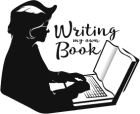There are several factors I consider when I approach website content for a book sales website. I’m not only concerned with the content. I am concerned about the layout and functionality of the website itself. Not only do my clients need to be found. Results after they are found are essential.
Genre. Search Terms. Content. Presentation!
There are four primary drivers that help your book sales website appear in search results. One is your book’s genre. Second is the choice of appropriate search terms. The third is content. The fourth is presentation—what a website looks like and how it functions.
Ultimately, content works best when knowledge of your genre’s audience lays the foundation and search terms serve that foundation. Then your content uses what you’ve built so far to inform what a coherent web experience should look like for your audience. This is especially true if the visitor found the site through organic search.
Each page on your website should be connected to the type of book or service your visitor came looking for. Appropriate search terms (keywords) should have done their job—bringing the ideal visitor to your virtual doorstep. However, once the visitor is there, it’s the content and the way it’s presented that is going to keep the visitor hooked or lose him or her.
Presentation is the ‘glue.’
So how does the presentation of content within a book sales website hook your reader’s interest? It does it through a mixture of practical and creative aspects. For example, you pay careful attention to the way your website functions. This is practical because a website’s form should consider the needs of visitors coming to the website. The creative side is how the website looks to the eyes. You need both to have a successful book sales website.
1) Use strategies that keep every page loading quickly.
Imagine yourself holding your smartphone. How long are you going to wait for the page to load? You’re patient if you wait 5 or 6 seconds! Google knows this, so it penalizes slow-loading websites with a lower rank.
I used to focus on just the home page loading quickly. Now I believe the target for every page is less than three seconds. Why 3 seconds? Because that’s when bounce rates start to climb. It’s also the point at which Google says, “Your book sales website does not deliver a positive user experience.”![]() This content is for members only.
This content is for members only.
2) Avoid anything on your website that pops up unexpectedly.
Have you ever felt like you were going to jump out of your skin when a website suddenly starts blaring at you? Usually, you discover there’s a video running somewhere on the page. But where? If your visitor stays around to find it, you should consider yourself blessed! Most don’t.![]() This content is for members only.
This content is for members only.
3) Avoid popups / popovers until you’ve earned trust.
Popups, aka popovers, are everywhere. And most visitors won’t bounce away if one appears. However, it’s irritating to face a popover as soon as you click to a page from Google. It’s just annoying enough to many potential followers, that the effort to close the popover is too much. They just go elsewhere.![]() This content is for members only.Ultimately, any popups/popovers you do choose to use should be simple and load quickly.
This content is for members only.Ultimately, any popups/popovers you do choose to use should be simple and load quickly.
4) Recognize that your home page isn’t a landing page.
Consider your home page the launching site for landing pages. You can develop your message more completely on pages that are dedicated to a single message. Your home page is not the place for saying everything about your book or any services you may offer. It should be the venue for nurturing a deeper interest, so visitors dig deeper into all you have to offer.
5) Include at least one call to action (CTA).
Decide what action you want your visitor to take. Is it to call you? Is it to download a white paper? Is it to view a video? Whatever it is, invite your visitor to do something that has the potential of bringing him or her into your sales funnel.![]() This content is for members only.
This content is for members only.
6) Use color, images and video.
Color, used carefully, can be a powerful tool for organizing your page. Consider CTAs. ![]() This content is for members only.
This content is for members only.
7) Avoid pushy, arm-twisting content.
You don’t want use aggressive sales talk on your home page, even if you are confident that all your visitors are there to buy your book. In fact, pushy sales copy is the best way to send readers away. ![]() This content is for members only.
This content is for members only.
Ultimately, the most important thing to remember as you balance content and design is the need to answer the following three questions every visitor asks when they visit a website.
- Why did my search bring me to this page? The answer should be obvious.
- Where do I go? Navigation should be simple to understand and logical to use.
- How do I get the information I am looking for? It should be obvious what a visitor should do to access the desired information.
You want every visitor to your website to know what you offer, where you would like them to go and what you would like for them to do. When you combine calls to action with good layout and customer-driven messages, you’ve investing in an income generating asset.


